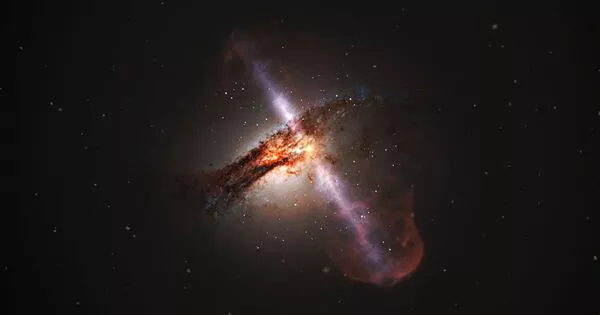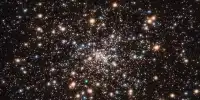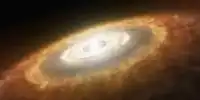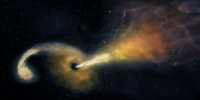An international team of astronomers used a database that combined observations from the world’s best telescopes, including the Subaru Telescope, to detect the signal from dying galaxies’ active supermassive black holes in the early Universe. The appearance of these active supermassive black holes correlates with changes in the host galaxy, implying that a black hole can have far-reaching consequences for the evolution of its host galaxy.
The Milky Way Galaxy, in which we live, contains stars of various ages, including stars that are still forming. However, in some galaxies, known as elliptical galaxies, all of the stars are old and roughly the same age. This suggests that elliptical galaxies experienced a period of prolific star formation early in their histories, which abruptly ended. Why this star formation ceased in some galaxies but not others is not well understood. One possibility is that a supermassive black hole disrupts the gas in some galaxies, creating an environment unsuitable for star formation.
These findings indicate that a sudden cessation of star formation in the early Universe correlates with increased supermassive black hole activity. More investigation is required to determine the specifics of the relationship.
For centuries, people have imagined a massive and dense object in space from which no light could escape. Black holes were most famously predicted by Einstein’s theory of general relativity, which demonstrated that when a massive star dies, it leaves behind a small, dense remnant core. The force of gravity overwhelms all other forces and creates a black hole if the core’s mass exceeds about three times the mass of the Sun, according to the equations.
Astronomers examine distant galaxies to put this theory to the test. Light takes time to travel across the void of space due to its finite speed. The light we see from an object 10 billion light-years away had to travel for 10 billion years to reach Earth. Thus the light we see today shows us what the galaxy looked like when the light left that galaxy 10 billion years ago. So looking at distant galaxies is like looking back in time. But the intervening distance also means that distant galaxies look fainter, making study difficult.

To overcome these difficulties an international team led by Kei Ito at SOKENDAI in Japan used the Cosmic Evolution Survey (COSMOS) to sample galaxies 9.5-12.5 billion light-years away. COSMOS combines data taken by world leading telescopes, including the Atacama Large Millimeter/submillimeter Array (ALMA) and the Subaru Telescope. COSMOS includes radio wave, infrared light, visible light, and x-ray data.
The team first used optical and infrared data to separate galaxies into two groups: those that are still forming stars and those that have stopped. The signal-to-noise ratio of the x-ray and radio wave data was insufficient to distinguish individual galaxies. As a result, the team combined data from different galaxies to create images with a higher signal-to-noise ratio of “average” galaxies. The team confirmed x-ray and radio emissions for galaxies without star formation in the averaged images.
This is the first time such emissions from distant galaxies more than 10 billion light-years away have been detected. Furthermore, the findings show that the x-ray and radio emissions are too powerful to be explained by the galaxy’s stars alone, indicating the presence of an active supermassive black hole. This black hole activity signal is weaker in galaxies that are undergoing star formation.
These findings indicate that a sudden cessation of star formation in the early Universe correlates with increased supermassive black hole activity. More investigation is required to determine the specifics of the relationship.














